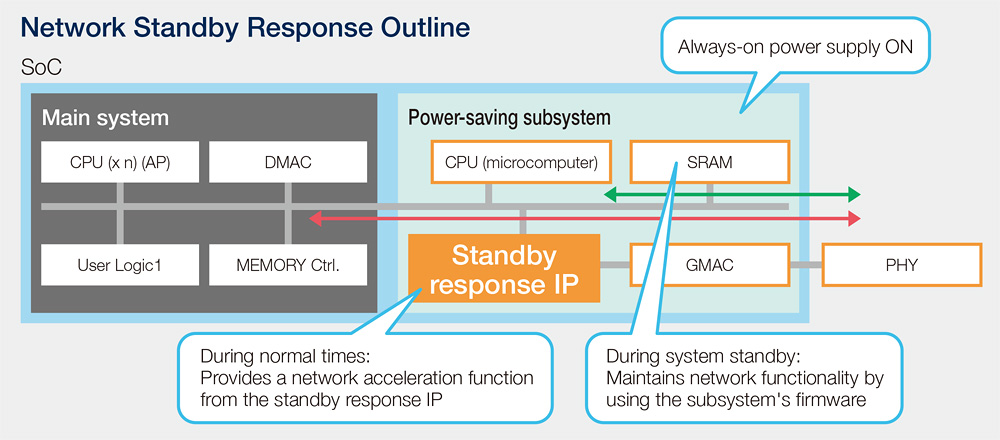Power-Saving Subsystem
In step with SoCs becoming more functional and highly integrated recently, providing a power-saving mode has become an absolute essential. For example, network standby mode keeps the minimum required interfaces, mainly network functions, awake and places the remaining functions in standby to save power. Sleep mode keeps only subsystems awake to make the system enter a deeper sleep, and there are various ways to implement power-saving mode. We provide a power-saving system to satisfy such needs.
Outline
A power-saving subsystem is composed of an Arm microcomputer, minimum required peripheral IP, RAM, and others, and operates separately from the main system. By doing so, this subsystem allows you to achieve the following functions.
[Processing in system standby]
Transition and return from power-saving mode with a simple instruction from the main system to the subsystem
Achieve deep-sleep mode by keeping only the subsystem awake
Integrate the power-up and shut-down sequences
![[Processing in system standby]](images/power_01.jpg)
[We offer the following support services that make it easy to introduce the subsystem.]
Support for considering system power-saving sequences between the main system and subsystem
Software design support for main system sleep and wake-up scenarios
Design support for controlling the subsystem power supply
Network Standby Response
Network standby response is a function in which the subsystem carries out packet processing on behalf of the main system when it is in a standby state. This function also supports the following functions.
[Support Function]
Main system wake-up assistance when a packet requiring processing by the main system is received
The acceleration function that accelerates packet processing in a normal state





